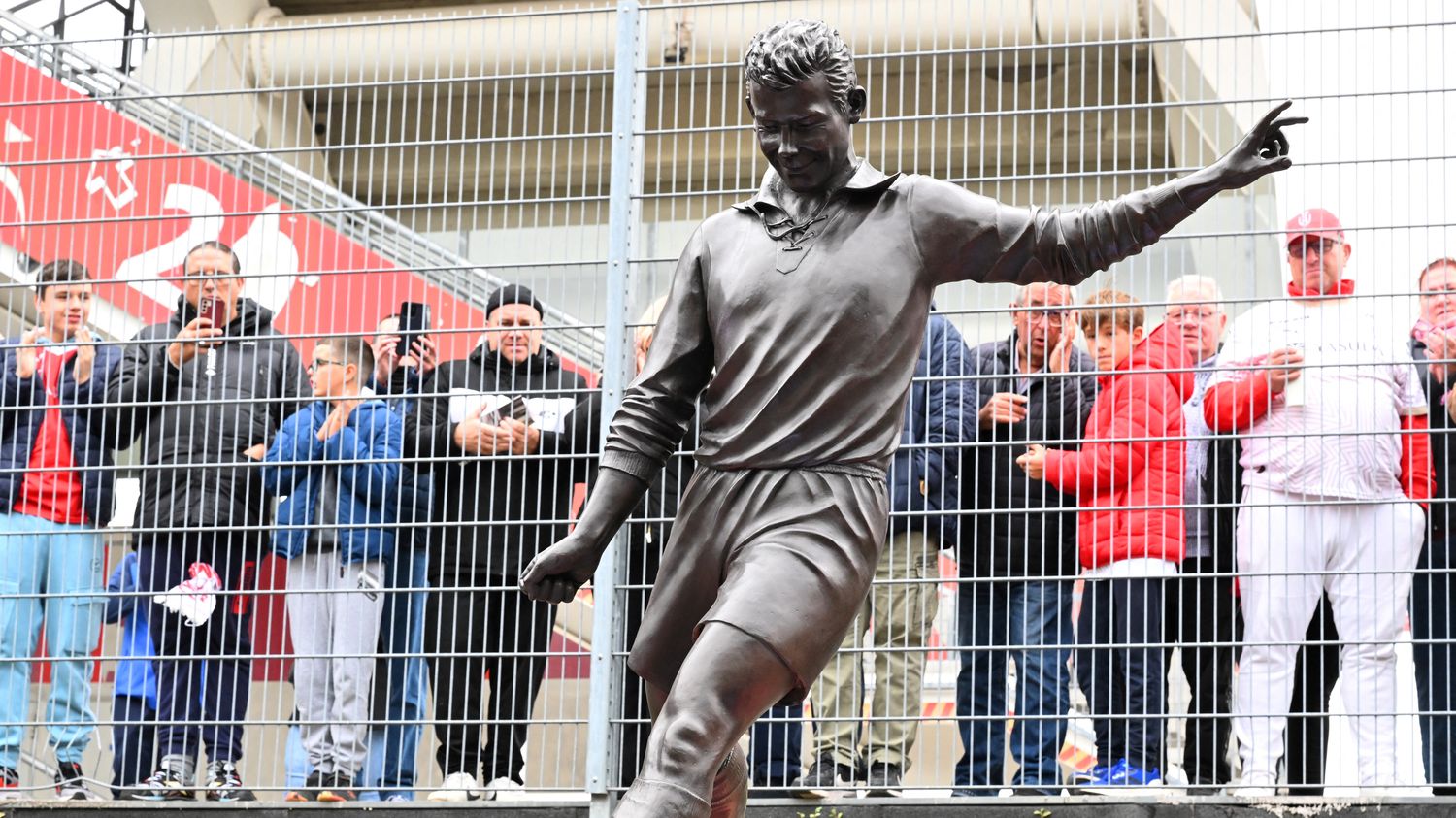The Stade de Reims recently unveiled the statue of Just Fontaine near the Auguste-Delaune stadium. In France, however, statues of footballers are very rare.
Published
Reading time: 4 min

In front of a large crowd gathered on the square in front of the Auguste-Delaune stadium in Reims, Arnaud Robinet, mayor of the city, and Jean-Pierre Caillot, president of the Stade de Reims, inaugurated the statue of Just Fontaine on Sunday October 6. The legendary number 9, three times French champion with the Reims club, was immortalized in bronze.
“This statue will be, for our players, our supporters and all football lovers, a daily reminder of what it means to be a great player, and above all a great man.“, declared Jean-Pierre Caillot in front of the sculpture. If the Stade de Reims celebrates its legends with statues, the Champagne club is an exception. In France, you can count the statues of footballers on the fingers of one hand.
Just Fontaine is the fifth player to have a statue in France. Reims now has two. “Justo”, as he was nicknamed, now sits alongside his former club and French team teammate, Raymond Kopa. In Rennes, Jean Prouff has his statue. Inaugurated in 2021, the bronze of the former emblematic player and coach of Stade Rennais is installed not outside, but inside the stadium, seated in the stands. The same year, FC Nantes honored its former midfielder who played 638 games for the Canaries: Henri Michel. Finally, the last statue is that of Raymond Keruzoré, considered the best Breton player by France Football, located in Carhaix, a town which likes to statue its regional icons.

This number is very low compared to our European neighbors (23 in Germany and 25 in Spain) where footballers are more regularly honored. Jacqueline Lalouette, historian and professor at the University of Lille, explains that France is a country that loves statuary: “We have a real statue culture. Public statuary is very developed, but it mainly concerns political figures, writers, soldiers or scientists.“
“Statues of athletes are much rarer. Summern France, they are quite recent, like those of actors and singers“, continues the researcher, who explored this subject in her work ‘A people of statues’. The sculpted celebration of great men (France, 1801-2018). In France, unlike Anglo-Saxon countries, it is extremely rare to see figures statued during their lifetime, which also helps to explain the low number of statues of footballers at present.
Several obstacles arise when it comes to erecting a statue in honor of a footballer. First, an initiative committee must lead the project. Then, it is necessary to obtain the agreement of the municipal council so that a public space is dedicated to the installation of the statue. At the same time, you have to find a sculptor capable of creating the work. Procedures which can be long.
The biggest challenge, however, remains financing, which can be very expensive. Made from noble materials, such as bronze or gold leaf, like the statue of Henri Michel in Nantes, the statues must attract patronage or release public funds. In Reims, the bronze sculpture of Just Fontaine, created by the Franco-Peruvian Juan Carlos Carrillo, cost 200,000 euros. The city of Reims participated in its financing, with the help of the Stade de Reims and local companies (champagne house), as it did for that of Raymond Kopa. Inaugurated in 2018, it also required a budget of 200,000 euros from the town hall. Amounts that can discourage certain projects.
All over the world, they bloom in large numbers. Cristiano Ronaldo in Madeira (Portugal), Zico in Rio de Janeiro (Brazil), Lionel Messi in Buenos Aires (Argentina), Bobby Moore in front of Wembley in London (United Kingdom), or even Thierry Henry in front of the Emirates Stadium (Arsenal) , also in the British capital, all have their statues. The United Kingdom seems particularly attached to this statuary culture. Overall, the site Sports Statueswhich studies statues of athletes from around the world, lists more than 120 statues linked to football (players, coaches, presidents, iconic fans) in the United Kingdom.
Specialist in statistics on footballer statues at the University of Sheffield, Chris Stride explains why there are more statues in his country than in France. “Football is not as all-consuming a passion in France as it is in the United Kingdom. The number of spectators and media coverage reflect this. This is bound to have an impact on the funding and organization required to erect statues, as well as the extent to which footballers are considered appropriate subjects.“
However, according to Chris Stride, it is not impossible to imagine that this phenomenon will grow in France in the coming years. “There is a natural contagion effect: a club or a city does it and others are inspired by it“.
